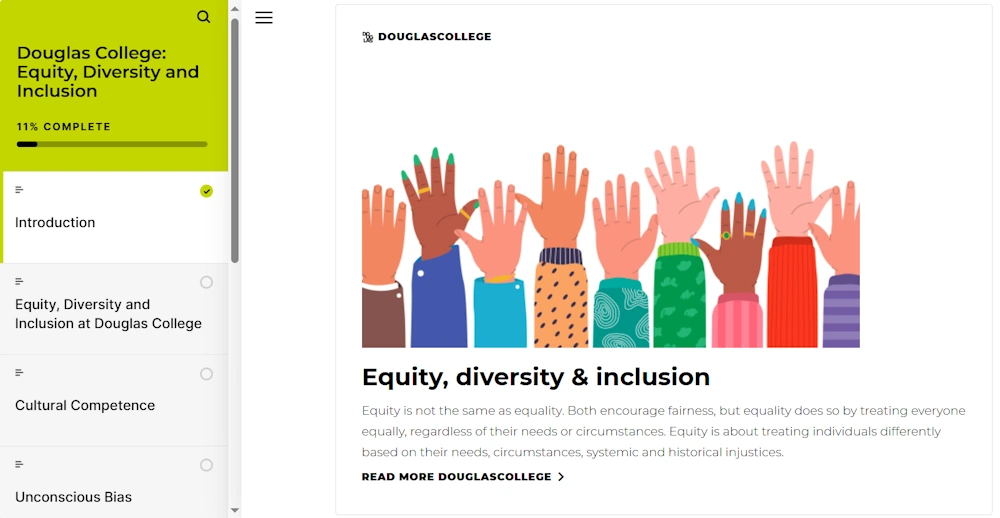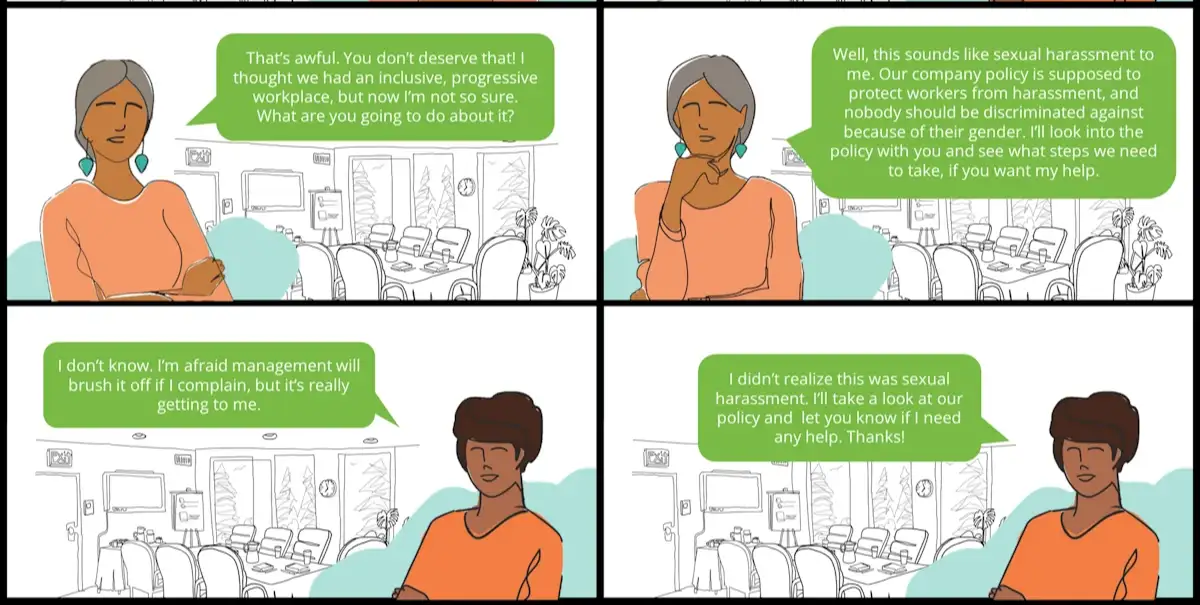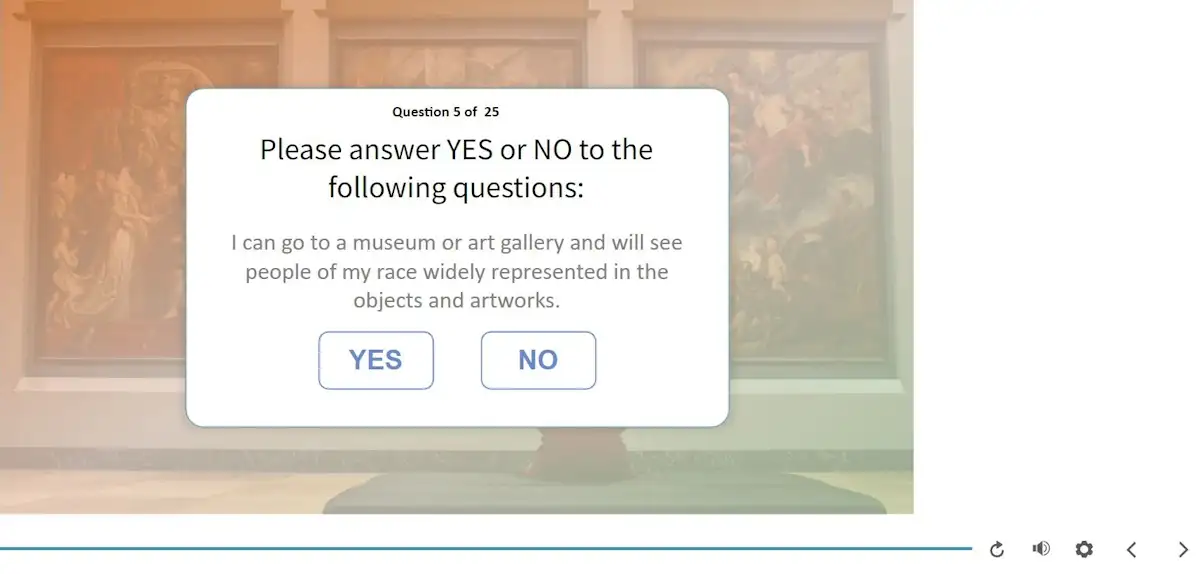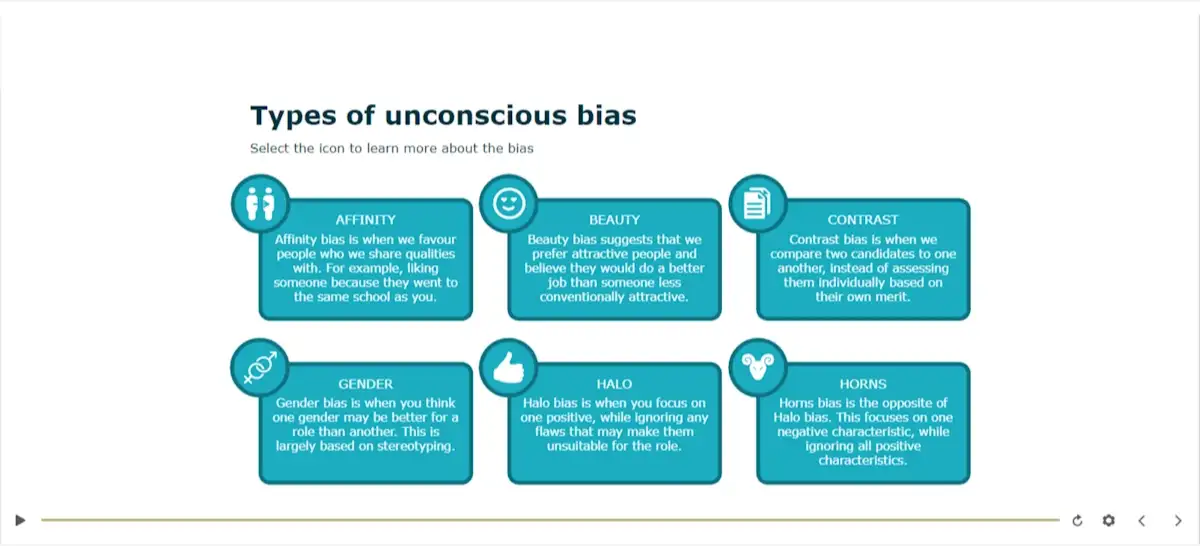Articulate
7 Articulate Examples That Inspire Creativity in Online Courses
Creating engaging online courses is an art. It requires creativity, innovation, and the right tools....
Read MoreAre you considering implementing a diversity in the workplace training program for your organization? If so, are you sure that your organization needs it? Do you know how important diversity training in the workplace is and what the workplace statistics are behind it? Also, do you know there are different levels an organization can attain or the most effective way to deliver the training? In this article, we answer these questions, provide you with an assessment tool to decide if your organization needs diversity training in the workplace, and discuss the options you have for implementing the training. Then, we will end with tips on overcoming challenges using our top tips based on our extensive experience creating custom training for numerous clients. Let’s begin.
Diversity in the workplace refers to differences among people in an organization. It can encompass a broad spectrum of individual and group differences. For example, Diversity in the workplace includes:
“Diversity and Inclusion needs to be something that every single employee at the company has a stake in.” — Bo Young Lee, Uber’s Chief Diversity and Inclusion Officer.
In your diversity training in the workplace all these factors need to be included in your new program.

Read a case study about developing diversity training in the workplace at a major North American College
First and foremost, diversity is essential for cultivating social justice and equity. Secondly, organizations have found that diversity is necessary because it enhances organizational performance. Below are some of the reasons why it matters to organizations and why diversity training in the workplace is now a standard course for many organizations:
It’s important to note that while having a diverse workforce is vital, it’s equally essential to ensure inclusion. That’s because diversity without inclusion can still make marginalized groups feel undervalued or unheard. Actual benefits arise when diverse voices are present and actively included and valued in decision-making processes and organizational culture.
“Inclusion is not a matter of political correctness. It is the key to growth.” — Jesse Jackson.
Nowadays, diversity and inclusion in the workforce are natural necessities for most of us. But if you have individuals in your organization you still need to convince that diversity in the workplace training has a high return on investment, show them some of the statistics below. It’s one of the reasons that diversity training in the workplace is now one of the most popular courses organizations offer because they’ve realized the benefits.
“In today’s interconnected and globalized world, it is now commonplace for people of dissimilar world views, faiths, and races to live side by side. It is a matter of great urgency, therefore, that we find ways to cooperate with one another in a spirit of mutual acceptance and respect.” – Dalai Lama.
To help you decide if your organization needs diversity training in the workplace (or additional training), we’ve created a practical assessment that you can use. We based it on information from highly reputable sources, including Global Diversity, Equity & Inclusion Benchmarks, McKinsey & Company Reports on DEI, Harvard Business Review (HBR), and others, including government sources.
The assessment covers six areas
And it also provides an evidence-based and practical way to assess your organization’s DEI efforts and determine if there’s a training gap. It only takes about 10 minutes. Access the assessment below and rate your organization. Does it rank below 90 points and require training to level up or even excel as a diverse and inclusive organization?
The ultimate goal of diversity training in the workplace is to create a more inclusive and harmonious workplace where every individual feels valued, understood, and respected. As such, you can develop several levels of diversity training in the workplace depending on your organization’s situation and needs. Once you’ve decided if your organization needs diversity in the workplace training, you need to decide what level of training it requires. The assessment you completed will assist you in determining the current level and what you need to focus on to enhance it.
Awareness building is often the first step in diversity training in the workplace. It is where participants are made aware of their own biases and prejudices, both conscious and unconscious. The idea is to recognize that everyone has biases that can influence their decisions and behavior regardless of background.
Once participants recognize their biases, the next step is to develop skills to interact more effectively with people from diverse backgrounds. It might include communication skills, conflict resolution strategies, and techniques for building inclusive teams.
The ultimate aim of diversity training in the workplace is to change behavior. So, participants are encouraged to apply their knowledge to create an environment where every employee feels included and valued. It can involve modifying how people provide feedback, hiring practices, or reshaping team dynamics.
Embedding the training and enhancing diversity and inclusion is the next level. Also, it’s been demonstrated that when companies have inclusive cultures, they are:
The Diversity And Inclusion Revolution, Deloitte
So, having decided that your organization requires diversity training in the workplace, and the levels that you want to focus on for improvement, what format should the training take, and how will you deliver it? There are several factors to consider when making these decisions, including pros and cons.
The first consideration is whether you will undertake in-person training or workshops or utilize online training delivery. In-person training is a good choice if you
Otherwise, for most organizations, it’s not as viable an option because
Most organizations now will choose an online or a blended training option (part online, part in-person), which also have the environmental advantage of contributing to a smaller carbon footprint.
Assuming an online option is selected, do you create an on-demand course or have instructor-led training? An example of the latter is virtual live training conducted via Zoom or a similar platform. Its advantages are that you can reach remote teams with your diversity training in the workplace program and include some interactive elements such as breakout rooms, live polls, and chat-based discussions. However, these sessions require scheduling and can become an administrative burden. In addition, they also do not have the level of interactive instructional activities you can include in an on-demand course.
For most applications, including diversity in the workplace training, on-demand courses have many advantages.
To maximize the impact of diversity training in the workplace, it must be part of a larger strategic initiative that has buy-in from leadership and is evaluated regularly and updated to reflect the organization’s evolving needs.
A training component is crucial in fostering an understanding and appreciation that diversity goes beyond merely hiring diverse talent. To truly create an inclusive environment, there needs to be an active commitment from all organization members to understand, respect, and value individual differences. Diversity training in the workplace can play a pivotal role in this process, and online training offers a range of advantages:
Accessibility: Online diversity in the workplace training is accessible to anyone with an internet connection. So, employees can access training regardless of location, making it especially useful for companies with multiple locations or remote workers.
Flexibility: Employees can complete training at their own pace and schedule. This flexibility can lead to better engagement and comprehension as learners can choose optimal times for their learning.
Consistency: Online diversity in the workplace training ensures that every participant receives the same content, reducing variability in delivery that can occur with in-person sessions.
Scalability: Online platforms can accommodate many users, making it easy for organizations to simultaneously roll out training to everyone.
Data Tracking and Analysis: Online platforms can provide valuable analytics about employee engagement, areas where employees may struggle, and completion rates. This data can help to improve the training content and address specific issues.
Interactive Learning: Modern on-demand diversity in the workplace training incorporates interactive elements, such as quizzes, videos, discussion groups, and simulations, which can enhance engagement and retention.
Easy Updating: As ideas and best practices around diversity and inclusion evolve, you can easily update online training materials to reflect the latest research and insights.
Resource Libraries: Online training can offer a resource library for participants, allowing them to revisit content, access additional readings, or delve deeper into specific topics.
Immediate Feedback: Many on-demand training modules provide immediate feedback through quizzes or tests, allowing participants to gauge their understanding and revisit areas of confusion.
The final consideration you have to make is whether you will implement a custom on-demand course or direct your workforce to an ‘off-the-shelf’ course (for example, Udemy or LinkedIn training). ‘Off-the-shelf’ diversity in the workplace training courses can be cost-effective. But only if you have a few people who will take the courses, and you don’t get caught paying per module (see below). Also, they are often quick to deploy if the training already exists.
However, there are several disadvantages to ‘Off-the-shelf’ diversity in the workplace training, including
Many organizations will thus choose a custom-developed on-demand course. Not only does it have all the benefits (see above) of on-demand courses, but they have the following advantages over “off-the-shelf” diversity in the workplace training courses.
As we’ve seen, online diversity training in the workplace has many advantages and can cover many levels. However, pursuing your training goal successfully requires a thoughtful approach and overcoming challenges. At Spark + Co., we’ve created many diversity in the workplace training courses for a variety of organizations, including
In developing numerous online training modules on diversity and inclusion in the workplace, we’ve found some top tips to help create successful diversity training in the workplace courses, including how to overcome challenges and deal with complex topics in this sensitive area.

Before creating any training program, it’s essential to understand its purpose and explain ‘Why is diversity important for your organization?’ It’s essential to ensure that the training is rooted in real business goals, recruitment strategies, and societal benefits, such as improved performance, better decision-making, and representing a diverse customer base. That’s because when participants understand the “why,” they’re more likely to embrace the “how,” and the impact of your diversity training in the workplace will be more significant.
Playing it too safe with all your training examples usually doesn’t achieve the behavioral changes that you may desire. And may not be authentic about the specific issues you are dealing with. So, without offending anyone, be courageous with the examples you use. These should include diversity training examples or stories that make you squirm slightly, as these will evoke a reaction. You want your examples to be as authentic and human as possible. That way, learners will recognize that you are developing an unsanitized solution for an audience by creating diversity in the workplace training that pushes the boundaries a little.
When working with our clients on designing online learning, we often collaborate and work with a stakeholder group or project team. It’s essential that the client team we work with is diverse. If the immediate team doesn’t have the required diversity, we’ll advise clients to recruit people from diverse backgrounds to review the content early in the development process.
For example, having an Indigenous perspective was critical for one client. But they also did not want to add to the workload of their Indigenous experts. So, the client hired an Indigenous person for the project to ensure that the language and perspective were culturally sensitive and appropriate.
Diversity and inclusion can be an emotionally sensitive topic. However, many people are still learning and understanding the intricacies and nuances and how to apply them to their daily lives. So, to help the process and prevent offending anyone unintentionally, it’s a good idea to establish writing standards.
The journey to understanding diversity starts within. So, in your diversity in the workplace training, encourage participants to examine their biases, beliefs, and behaviors. You can achieve this through quizzes, reflective exercises, and open-ended questions. Individuals are better positioned to recognize, address, and challenge their unconscious biases.
Questions such as “What would you do in their shoes?” can provide reflective activity, a form of repetition and practice. And practice is a necessary part of learning. The diversity training examples below that you can click on and review, illustrate this type of approach.

Click the image to answer the questions in this activity of a Diversity in the workplace training course
Tailor your Diversity in the workplace training course to your organizational context – what does it mean to your business outcomes? Why should the learner pay attention to diversity and inclusion at your organization? Learners often want to understand the specific context and impact on their workplace. So, address the unique diversity challenges that your organization or industry faces. And use customized content as it makes the course more relevant to them and enhances your audience’s engagement. You should tailor the content to align with your organizational culture’s values and goals.
Different people and workplaces require different types of training and materials. So avoid adapting training materials created for a purpose different from yours.
As part of their diversity in the workplace training, a college asked, “What does indigenization mean to me in my role at Douglas?” Then, they recorded the employees’ answers to show how individuals reflected on what it meant for them in their work.
While you should tailor your course to the specific circumstances within your organization, ensure you consider all forms of diversity. For example, race and gender are often the primary focus, but diversity is multifaceted. So ensure your training includes age, sexual orientation, physical abilities, mental health, religious beliefs, neurodiversity, and socio-economic status. A comprehensive approach means that all employees can resonate with the content, even if you focus more detail on the most relevant aspects of your organization. People with “invisible” disabilities experience discrimination, so keep your definition of diversity as broad as possible.
Each individual brings a unique perspective based on their experiences. And learning from peers often leaves a lasting impression and builds empathy. So, where possible, create opportunities for learners to share stories, insights, and perspectives. You can facilitate this in your diversity in the workplace training through discussion forums, group projects, and breakout sessions.
Diversity and inclusion are dynamic areas, evolving with societal changes, research findings, and emerging narratives. So, as with most courses, online diversity in the workplace training requires regular updating to ensure the content remains relevant, accurate, and aligned with the latest best practices and organizational policies.
Essential to any course, especially for diversity training in the workplace, is a need to create an online space where participants can discuss diversity topics openly. Establishing clear rules against discrimination at the start, demonstrating empathy, and creating a safe place for all are critical.
Use a blended learning approach where possible when creating your diversity in the workplace course. This can include considering a mix of e-learning modules, webinars, reading materials, and forums. The advantage Is that this caters to different learning preferences and keeps engagement high. If feasible, you could also integrate face-to-face sessions to make certain activities more impactful.
You could use lots of free images and other content in your training. But these need to be authentic, which is one of the reasons to use the storyteller to tell their story. So, avoid stereotypes when using images, voice casting, and writing narratives. It prevents participants from listening to a voice or seeing a picture and thinking, ‘They don’t sound Asian enough’ or ‘look Indigenous enough.’ For example, using poorly selected stock images can be considered tokenism.
Some resources we find valuable and helpful are
Training is an integral part of creating a diverse and inclusive workplace. However, a course on its own isn’t solely going to achieve the results you desire. Suppose you aren’t genuine in your approach to diversity in hiring, promotion, and other programs. In that case, no amount of training will help.
One of our recent clients provides some practical examples of diversity training. They took steps to not just talk about it but created diversity training in the workplace for their managers on inclusive hiring. It included modules on more equitable processes, creating a richer talent pool, and a practical toolkit for the managers. While not a complete solution, it demonstrates the work that will have a more profound impact.

Screenshot From An Inclusive Hiring Course Created For A Real Estate Development Company
Organizations are rapidly realizing the value of creating a more inclusive and harmonious workplace where everyone feels valued, understood, and respected. And results show that it can drive innovation, enhance creativity, foster a more inclusive environment, and generate improved financial returns. Having decided, perhaps using our assessment, that your organization requires a new diversity in the workplace training program, you can now choose using the information above what form that should take and how you want to deliver it. If you need help working through the options or help creating an on-demand or virtual-led training program, book a consultation below or contact us for more information. And if you’d like more information on diversity in the workplace training read this case study from a regional college.